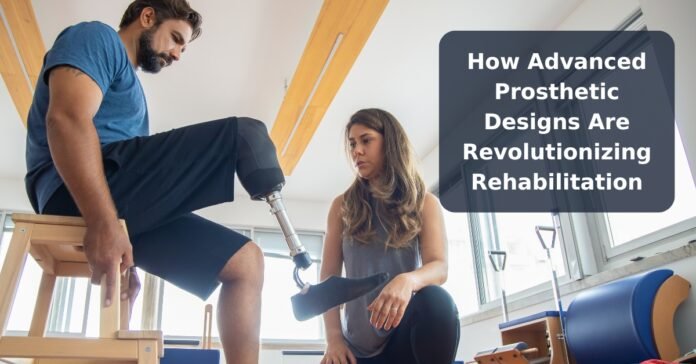
Patient rehabilitation has undergone a remarkable change, driven by innovations in prosthetic design and technology. Once characterized by basic functionalities, modern prosthetics have transformed into sophisticated tools that not only restore mobility but also significantly enhance the quality of life for users.
These progressive designs are proving to be game-changers in healthcare, allowing individuals to regain their independence more swiftly and comprehensively than ever before. But what factors are fueling these advancements, and what impact do they have on the rehabilitation process? Let’s delve into how cutting-edge prosthetic technology is reshaping the recovery experience for patients worldwide.
Key Innovations in Prosthetic Design
- 3D-Printed Prosthetics: The advent of 3D printing has transformed the customization of prosthetics, facilitating quicker production, reduced costs, and devices that fit patients’ unique physical requirements. In Dubai, the best prosthetic manufacturing sector is increasingly focusing on creating advanced solutions tailored to individual needs. With ongoing innovations, prosthetics are becoming more intuitive, durable, and accessible, enabling many individuals to achieve fulfilling lives.
- Smart Prosthetics: Featuring integrated sensors and robotics, smart prosthetics respond to muscle signals or brain waves, providing users with more natural control and movement of their artificial limbs.
- Bionic Prosthetics: These highly sophisticated devices utilize electronics and mechanics to imitate real limb functionality, empowering users to perform intricate and precise movements, such as grasping objects or walking smoothly. The National Institute of Biomedical Imaging and Bioengineering offers comprehensive insights into bionic limb prosthetics.
- Integration of Wearable Technology: Contemporary prosthetics now include wearable technologies like smart sensors that monitor movement, pressure, and alignment, delivering real-time feedback to both patients and healthcare providers to optimize rehabilitation.
Significance of Prosthetics in Contemporary Rehabilitation
- Restoration of Mobility: Prosthetics are essential in helping patients restore their movement capabilities, whether they have lost a limb due to injury, illness, or surgical intervention. Advanced prosthetic limbs now replicate the motions of natural limbs more effectively than ever before.
- Enhancement of Psychological Well-being: Beyond physical recovery, prosthetics significantly boost emotional and mental health by restoring independence and functionality, which fosters confidence and a sense of normalcy in patients. The American Psychological Association emphasizes the critical role of psychological support in successful rehabilitation.
- Personalized Rehabilitation Programs: With advancements in prosthetic rehabilitation, therapy is increasingly tailored to each patient, allowing for better adaptation to specific prosthetic devices and yielding improved long-term outcomes.
- Support for Long-Term Recovery: Modern prosthetics contribute to rehabilitation that extends beyond physical healing, aiding patients in reintegrating into daily life and, in some cases, returning to work or active routines. The World Health Organization underscores the necessity of assistive technologies, including prosthetics, for long-term rehabilitation and societal reintegration.
How Advanced Prosthetics Enhance the Rehabilitation Process
- Increased Mobility: The latest prosthetic designs afford patients greater range of motion and control, enabling them to perform everyday tasks with more confidence and ease.
- Shortened Recovery Time: Advanced prosthetics are typically lighter and more intuitive, allowing patients to acclimate more swiftly during rehabilitation, which reduces overall recovery duration. The Amputee Coalition provides valuable insights into how prosthetic technology accelerates rehabilitation.
- Immediate Feedback and Adjustments: Smart prosthetics equipped with sensors offer instant feedback on limb performance, allowing for precise adjustments during therapy to ensure optimal functionality.
- Improved Comfort and Fit: Innovations such as 3D-printed prosthetics provide a customized and comfortable fit, reducing the likelihood of pressure sores, irritation, or discomfort during the rehabilitation phase. MIT News highlights advancements in personalized prosthetic design that enhance comfort and efficacy.
Advantages of Cutting-Edge Prosthetics for Patients
- Enhanced Functionality: Modern prosthetic technology delivers a higher level of functionality, allowing patients to perform complex tasks such as navigating varied terrains, climbing stairs, or participating in sports.
- Quicker and More Effective Rehabilitation: Innovative designs enable patients to undergo shorter rehabilitation periods, as they adapt more readily to their new limbs.
- Improved Quality of Life: State-of-the-art prosthetics significantly boost autonomy and confidence, allowing patients to re-engage with their lives, work, and social interactions more fully. The National Institutes of Health (NIH) elucidates how new prosthetic technologies are dramatically improving users’ lives.
- Customizable Solutions: From 3D-printed prosthetics to bionic models, today’s devices are highly customizable, providing tailored solutions that cater to each patient’s specific physical and functional requirements.
- Better Long-Term Health Outcomes: Patients utilizing modern prosthetic solutions often enjoy improved long-term health, including reduced bodily strain, enhanced posture, and fewer complications like joint issues or muscle atrophy.
Transforming Lives Through Innovative Prosthetics
It is evident that cutting-edge prosthetic designs are not merely enhancing rehabilitation; they are transforming lives. As technology progresses, the distinction between artificial and natural limbs is becoming increasingly blurred, empowering patients to lead more fulfilling, independent lives.
The future is brimming with potential, as ongoing advancements in prosthetics promise even more personalized and effective rehabilitation solutions. With the evolution of smart and bionic prosthetics, patients can anticipate shorter recovery times, improved mobility, and enhanced functionality in their daily activities.
Through innovations such as 3D printing and wearable technology, the field of prosthetics is undeniably reshaping rehabilitation. Each new development enables patients to reclaim control over their lives, underscoring the profound impact that the right technology can make.

